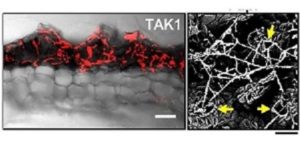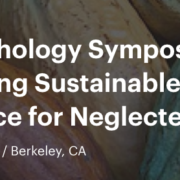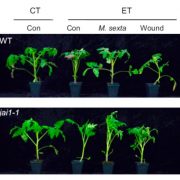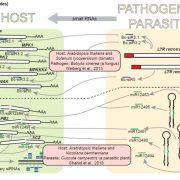Phytophthora palmivora establishes tissue-specific intracellular infection structures in the earliest divergent land plant lineage (OA)
 Surprisingly little is known about the pathogens of liverworts. Carella et al. explored the interaction between the broad-host range pathogenic oomycete Phytophthora palmivora and the model liverwort Marchantia polymorpha. They found that the pathogen enters the host tissues and proliferates in intercellular air chambers between photosynthetic cells, and also forms intracellular hyphal structures and expresses effector genes. This study revealed similarities as well as differences between liverwort and vascular plant responses to the pathogen. The authors point out that the branched intracellular hyphae that form could be mistaken for symbiotic structures, and recommend care when interpreting symbiotic-like structures in fossil plants. (Summary by Mary Williams) PNAS 10.1073/pnas.1717900115. (You can watch a video summary of this work here). Carella and Schonack have also written about the interactions between bryophyte hosts and pathogenic or symbiotic microbes in a nice review article in Plant and Cell Physiology 10.1093/pcp/pcx182.
Surprisingly little is known about the pathogens of liverworts. Carella et al. explored the interaction between the broad-host range pathogenic oomycete Phytophthora palmivora and the model liverwort Marchantia polymorpha. They found that the pathogen enters the host tissues and proliferates in intercellular air chambers between photosynthetic cells, and also forms intracellular hyphal structures and expresses effector genes. This study revealed similarities as well as differences between liverwort and vascular plant responses to the pathogen. The authors point out that the branched intracellular hyphae that form could be mistaken for symbiotic structures, and recommend care when interpreting symbiotic-like structures in fossil plants. (Summary by Mary Williams) PNAS 10.1073/pnas.1717900115. (You can watch a video summary of this work here). Carella and Schonack have also written about the interactions between bryophyte hosts and pathogenic or symbiotic microbes in a nice review article in Plant and Cell Physiology 10.1093/pcp/pcx182.









